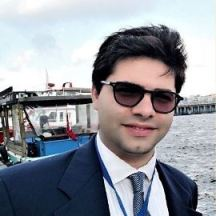New Sensors for Metrology for Aerospace
A special issue of Sensors (ISSN 1424-8220). This special issue belongs to the section "Physical Sensors".
Deadline for manuscript submissions: closed (10 September 2018) | Viewed by 23810
Special Issue Editors
Interests: ADC and DAC modeling and testing; digital signal processing; distributed measurement systems; aerial photogrammetry; unmanned aerial systems (UASs); automatic test equipment for UASs
Special Issues, Collections and Topics in MDPI journals
Interests: electrical and electronic instrumentation; data acquisition systems (DAQs) based on compressive sampling (CS); biomedical instrumentation; distributed measurement systems, including wireless sensor networks (WSNs); Internet of Things (IoT)
Special Issues, Collections and Topics in MDPI journals
Special Issue Information
Dear Colleagues,
It is our pleasure to invite you to submit your scientific contributions to this Special Issue, titled “New Sensors for Metrology for Aerospace”.
The use of sensors and transducers in the aerospace field is continually growing. The purpose of aerospace sensors is to provide all necessary information on the variables and the parameters of the flight system for the execution of a mission.
A modern aircraft is equipped with hundreds of sensors at all levels of the flight system. Thus, they have become an integral part of any flight system, also in preflight operations for maintenance and safety. For example, in case of unmanned aerial systems (UASs), sensors and multi-sensor systems have a crucial role during preflight and flight operations.
This Special Issue aims to highlight advances in the development, testing, and modeling of sensors and multi-sensors system for aerospace. Topics include, but are not limited to:
- Electronic instrumentation for aerospace;
- Automatic test equipment for aerospace;
- Sensors and sensor systems for aerospace applications;
- Wireless sensor networks in aerospace;
- Attitude and heading reference systems;
- Monitoring systems in aerospace;
- Metrology for navigation and precise positioning;
- Sensors and Data Fusion Techniques for Avionics and Air Traffic Management;
- Flight Testing Instrumentation and Flight Test Techniques.
This Special Issue cooperate with "The 5th IEEE International Workshop on Metrology for AeroSpace (MetroAeroSpace)", held in Rome, Italy, 20–22 June 2018. Authors of papers presented at this conference and within the scope of Sensors may submit a technically extended version to this Special Issue.
The 5th IEEE International Workshop on Metrology for AeroSpace:
http://www.metroaerospace.org/
Important Dates:
December 15, 2017 - Special Session Proposal
January 26, 2018 - Abstract Submission Deadline
April 15, 2018 - Notification of Acceptance
May 20, 2018 - Final Paper Submission Deadline
Prof. Dr. Pasquale Daponte
Dr. Francesco Picariello
Guest Editors
Manuscript Submission Information
Manuscripts should be submitted online at www.mdpi.com by registering and logging in to this website. Once you are registered, click here to go to the submission form. Manuscripts can be submitted until the deadline. All submissions that pass pre-check are peer-reviewed. Accepted papers will be published continuously in the journal (as soon as accepted) and will be listed together on the special issue website. Research articles, review articles as well as short communications are invited. For planned papers, a title and short abstract (about 100 words) can be sent to the Editorial Office for announcement on this website.
Submitted manuscripts should not have been published previously, nor be under consideration for publication elsewhere (except conference proceedings papers). All manuscripts are thoroughly refereed through a single-blind peer-review process. A guide for authors and other relevant information for submission of manuscripts is available on the Instructions for Authors page. Sensors is an international peer-reviewed open access semimonthly journal published by MDPI.
Please visit the Instructions for Authors page before submitting a manuscript. The Article Processing Charge (APC) for publication in this open access journal is 2600 CHF (Swiss Francs). Submitted papers should be well formatted and use good English. Authors may use MDPI's English editing service prior to publication or during author revisions.
Keywords
- Aerospace sensors
- Aerospace testing
- Unmanned aerial systems
- Aircraft navigation
- Wireless sensor networks
- Instrumentation
- Automatic testing
- Transducers
- Multi-sensor systems
- Data fusion techniques







